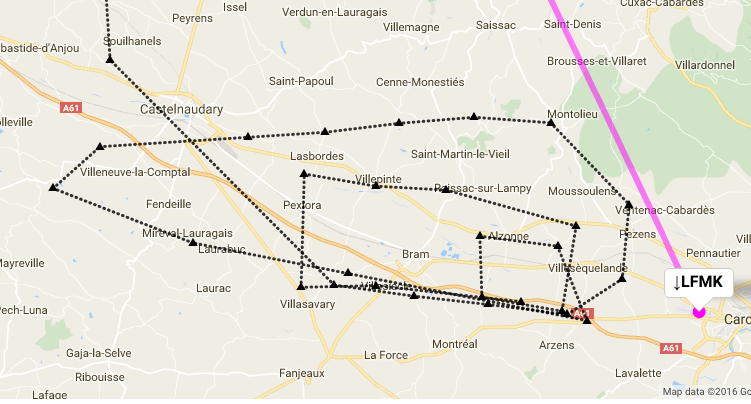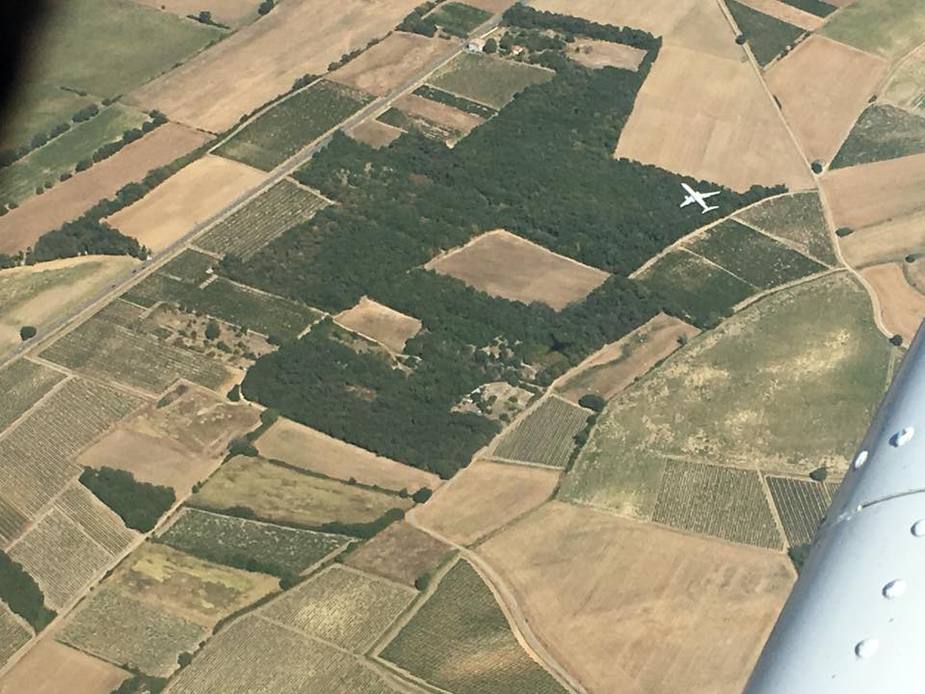The other day I ended up having to hold for 30 minutes at the end of a 4-hour flight from Gloucester to Carcassonne. (For the purists, only one of those in the screenshot is an actual NDB-based hold, the others are a radar-vectored “hold” and the actual approach).
It got me thinking: how often do people end up actually holding in a real-world flight (i.e. not for training)?

Previously to this trip, the nearest I have had to a hold was being asked to orbit once at the IAF at my home field.
On this occasion, on arrival I was told I was number 2 to a D reg light aircraft. However, number 1 had self-initiated a hold ahead of me as he hadn’t been cleared past a specific waypoint by the overworked approach controller. Once he was cleared onwards, I was instructed to hold once and expect an approach to RW10 then circle-to-land RW28. Unfortunately for me, a Ryanair rocked up just then and obviously got precedence. But even he had to hold again as the D-reg was going so slowly that he (the Ryanair) couldn’t make the approach from such a late clearance so he had to shoot the entire RNAV approach again. So I ended up being vectored in a big oval before flying an NDB hold to allow the Ryanair to C-T-L, then finally the RNAV approach.
My wife did get a chance, while we were holding at 5500’, to take a photo of the Ryanair on its approach below us:

I probably do 3-4 a year. Usually weather related ie LVP and at large airports.
Rich wrote:
It got me thinking: how often do people end up actually holding in a real-world flight (i.e. not for training)?
Maybe three times per year in 300 legs flown – or once per 100 flights. But it really depends very much on where you fly. Madrid Barajas sends you into the hold on every flight, Frankfurt on almost every flight during peak hours (same as Heathrow I guess, but I haven’t flown there myself yet). Everywhere else, the reason for being sent to the hold is mostly (in my operation) snow removal, runway inspections after birdstrikes of preceding aircraft and early arrival at destination just before their opening time.
I should have added – what is the typical holding time, when one is required?
So far in several years of IFR flight I only had to hold once for an extended period but that was over 1 hour. Everthing else was vectors, training holds, extended traffic patterns etc.
What do you do reduce holding fuel burn to stretch the available holding time to a max? In a piston plane we fly as low as possible with minimum holding speed as specified in the manual. We tried to do 6 minute holds or even longer with shallow turns as steeper turns require more engine power. When asked to desced in the hold a shallow decent also saves fuel.
Rich wrote:
…what is the typical holding time, when one is required?
There is no typical holding time I would say. I have had everything, from vectors out of the first turn to 60 minutes for thunderstorms to go away.
Sebastian_G wrote:
What do you do reduce holding fuel burn to stretch the available holding time to a max?
Use holding power setting as per airplane operating manual. If there is no such power setting in the manual, you are somewhat on your own. Going slow is certainly a good idea, but getting too slow might bring you behind the drag curve and you will actually need more fuel.
what_next wrote:
If there is no such power setting in the manual, you are somewhat on your own.
I thought every aircraft manual has to specify a maximum endurance power setting or speed? This should minimize the fuel required to stay in the air for a given amount of time.
Rwy20 wrote:
I thought every aircraft manual has to specify a maximum endurance power setting or speed?
I would have thought so too but since I have been lectured on these forums dozens of times that some people fly vintage/exotic/homebuilt/non-EASA/… airplanes to which different rules apply I stopped thinking altogether 
The “POH” of our club PA18s is actually a binder with a few A4 pages and is shockingly basic. But talking about holdings, I think we can assume that most pilots interested in flying one are going to do so in an IFR capable aircraft with a reasonably complete POH.
Come to think of it, we have probably finally uncovered here the reason why homebuilts cannot fly IFR in Europe. 
For propeller aircraft Vmp is behind the drag curve and is the minimum of the power required curve. Vmp equates to maximum endurance (at least in theory) and is close to Vx. In the Super Cub this equates to around 45 mph IAS, not the most practical as 60 mph is at the bottom of the drag curve and the aircraft is easier to fly at this speed. Endurance in my Cub might then jump to eight hours with full tanks bu it is day VFR only.
Outside of training or re validation very few holds, less than two a year. The last was due to other traffic declaring a medical emergency which gave them priority and a bunch of aircraft had to hold. Nearly all holds due to flow control you seem to get re cleared before entering the hold.